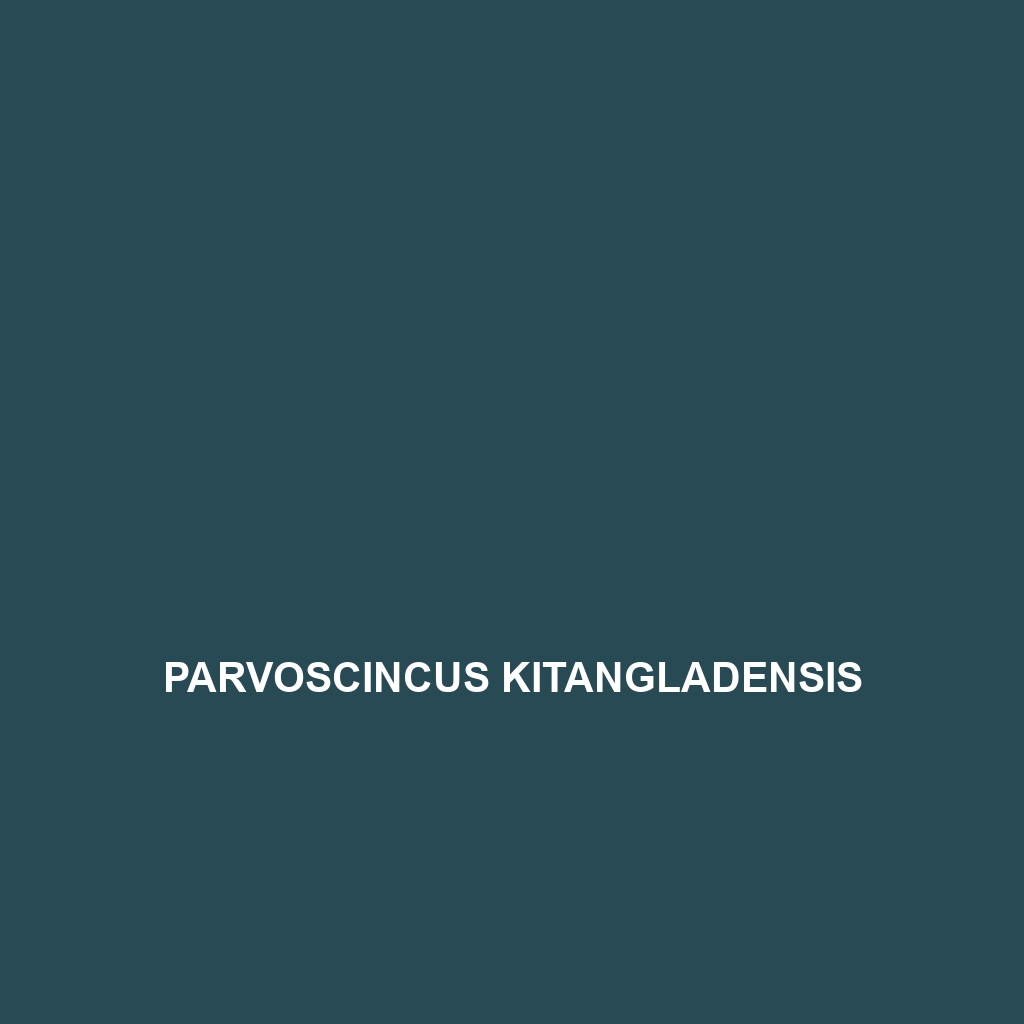Common Name
Parvoscincus kitangladensis
Scientific Name
Parvoscincus kitangladensis
Habitat
Parvoscincus kitangladensis is primarily found in the montane rainforests of the Philippines, specifically on the island of Mindanao. This species flourishes in humid, densely vegetated areas at elevations ranging from 800 to 1,600 meters above sea level. The climate in this region is characterized by a tropical rainforest environment, with high humidity, frequent rainfall, and temperatures that typically range from 18°C to 25°C. The rich biodiversity within these forests provides a suitable habitat and a plethora of resources for Parvoscincus kitangladensis, including shelter and food sources, contributing to its survival.
Physical Characteristics
Parvoscincus kitangladensis is a small to medium-sized skink, with a total body length ranging from 15 to 25 centimeters. Its elongated, slender body is adapted for life in the dense leaf litter of its rainforest habitat. The coloration of this species typically includes a striking combination of brown and green hues, allowing it to blend seamlessly with the forest floor. This cryptic coloration serves as an effective camouflage against predators. Unique features of Parvoscincus kitangladensis include smooth scales and a slightly flattened head, which aid in its movement through its natural environment.
Behavior
The behavior of Parvoscincus kitangladensis is characterized by its largely diurnal activity patterns, although it may exhibit some nocturnal behavior as well. This skink is known for its secretive nature and is often observed scuttling into cover when approached. Solitary by nature, these skinks engage in territorial behaviors during the mating season, which usually occurs in the spring. During this period, males may display vibrant colors and perform elaborate movements to attract females. Additionally, Parvoscincus kitangladensis possesses remarkable agility, allowing it to quickly evade predators and navigate the intricate terrain of its rainforest home.
Diet
Parvoscincus kitangladensis is an insectivore, primarily feeding on small invertebrates such as ants, beetles, and spiders. Their foraging behavior is crucial in maintaining ecological balance as they help control pest populations within their habitat. Skinks utilize their keen eyesight and agile movements to hunt and capture their prey effectively. Occasional consumption of plant material has been observed, indicating that they may also exhibit some omnivorous tendencies, though insects remain their primary food source.
Reproduction
The reproductive cycle of Parvoscincus kitangladensis is marked by annual mating seasons, typically occurring during the warmer months of the year. Females lay clutches of 2 to 5 eggs, which they bury in soft, moist soil under leaf litter. The incubation period lasts approximately 60 to 90 days, after which the hatchlings emerge, fully formed and independent. Parental care is minimal, as the young are capable of foraging for food shortly after hatching. The early life stage of these skinks is challenging due to predation and environmental factors, but survival rates are supported by their cryptic coloration and agile nature.
Conservation Status
As of the latest assessments, Parvoscincus kitangladensis is categorized as vulnerable, primarily due to habitat loss and environmental changes. Deforestation for agricultural expansion and logging poses significant threats to their rainforest habitat. Additionally, climate change impacts the delicate ecosystem they rely on, exacerbating their vulnerability. Conservation efforts are underway, focusing on habitat preservation and the establishment of protected areas to ensure the survival of this unique skink species.
Interesting Facts
Parvoscincus kitangladensis exhibits intriguing characteristics that make it a fascinating subject of study. One notable adaptation is its ability to change its coloration slightly to enhance its camouflage, which aids in evasion from predators. Furthermore, these skinks can regenerate their tails if lost, a fascinating survival mechanism that allows them to escape from threats. Local communities also regard this species as an indicator of forest health, highlighting its importance in biodiversity monitoring.
Role in Ecosystem
Parvoscincus kitangladensis plays a vital role in its ecosystem as both a predator and prey species. By controlling insect populations, it helps maintain the balance of the food web within its rainforest habitat. In turn, these skinks serve as prey for larger predators, contributing to the ecological pyramid. Their presence indicates a healthy ecosystem, highlighting the interconnectedness of species and the importance of conserving their habitats for the overall health of biodiversity in the region.
